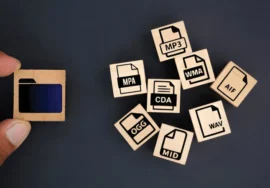
How We Transformed a Podcast from Noise to Niche
In the bustling landscape of podcasting, where new shows emerge daily, carving out a niche can be a daunting task. Yet, with strategic planning and unwavering dedication, it’s possible to transform a podcast from mere noise into a thriving, focused community. This is the story of how we navigated this transformation, turning our podcast into a sought-after resource in its niche.
Understanding the Power of Niche
The first step in our journey was to find our niche. While broad topics can attract a wider audience, they often lack the depth and focus that engage listeners. By narrowing down our focus, we could target a specific audience with tailored content. This not only improved our chances of attracting dedicated listeners but also strengthened our brand identity.
Crafting a Compelling Brand Identity
A strong brand identity is essential for any podcast. We developed a unique brand voice, a consistent visual style, and a clear value proposition. This helped us stand out in a crowded market and create a recognizable brand that resonated with our target audience.
Creating High-Quality Content
Content is king in the podcasting world. We invested time and resources in producing high-quality episodes that were informative, engaging, and entertaining. We focused on topics that applied to our niche and presented them in a way that was easy to understand and enjoyable to listen to.
Building a Loyal Community
A loyal community is the backbone of any successful podcast. We engage with our listeners through social media, email newsletters, and live events. We encouraged feedback and created a sense of belonging among our audience. This not only helped us build a strong following but also provided valuable insights into their preferences and needs.
Leveraging Social Media and Digital Marketing
Social media and digital marketing are powerful tools for promoting a podcast. We use platforms like Twitter, Instagram, and Facebook to share snippets of our episodes, engage with our audience, and promote our brand. We also invested in targeted advertising campaigns to reach a wider audience.
Collaborating with other Podcaster
Collaborating with other podcaster in our niche was a game-changer. We partnered with complementary shows to cross-promote our content and reach new audiences. This not only increased our visibility but also strengthened our position as a leading voice in our niche.
Measuring and Adapting
We tracked key metrics, like downloads, listener engagement, and social media interactions, to measure the success of our efforts. This data-driven approach allowed us to find areas for improvement and make adjustments to our strategy as needed.
Monetization Strategies
Once we had built a loyal following, we explored various monetization strategies, including:
- Patreon: Offering exclusive content and behind-the-scenes access to our patrons.
- Affiliate Marketing: Promoting relevant products and services and earning a commission on sales.
- Sponsored Content: Collaborating with brands to create sponsored episodes or segments.
- Merchandise: Selling branded merchandise like t-shirts, mugs, and tote bags.
Leveraging the Power of SEO for Podcast Growth
While creating engaging content and building a loyal community is crucial, optimizing your podcast for search engines can significantly boost its visibility. Here are some SEO best practices to consider:
Keyword Research:
- Identify Relevant Keywords: Use tools like Google Keyword Planner or SEMrush to find keywords that your target audience is searching for.
- Optimize Your Show Title and Description: Incorporate relevant keywords naturally into your show title and description.
- Tag Your Episodes: Use descriptive tags to categorize your episodes and make them easier to find.
Podcast Hosting Platform:
- Choose an SEO-Friendly Platform: Select a hosting platform that supports SEO best practices, such as automatic RSS feed generation and metadata optimization.
- Optimize Your RSS Feed: Ensure your RSS feed is well-structured and includes all the necessary metadata.
Social Media and Back-links:
- Share Your Podcast on Social Media: Promote your podcast on platforms like Twitter, Instagram, and Facebook to increase its visibility.
- Encourage back-links: Reach out to other podcaster, bloggers, and influencers to get back-links to your podcast.
Transcript for Your Episodes:
- Improve Accessibility: Transcripts make your podcast accessible to a wider audience, including those with hearing impairments.
- Boost SEO: Search engines can index the text in your transcripts, which can help improve your search rankings.
Engage with Your Audience:
- Respond to Comments and Reviews: Engaging with your audience can help build a loyal following and improve your podcast’s reputation.
- Encourage Sharing: Ask your listeners to share your podcast on social media and with their friends.
Analyze and Adapt:
- Track Your Performance: Use analytics tools to monitor your podcast’s performance and identify areas for improvement.
- Adapt Your Strategy: Continuously analyze your data and make adjustments to your strategy as needed.
By implementing these SEO strategies, you can significantly increase your podcast’s visibility, attract new listeners, and grow your audience. Remember, SEO is an ongoing process, so be patient and persistent.
Conclusion
The journey from noise to niche is a rewarding one. By focusing on creating high-quality content, building a strong community, and leveraging the power of SEO, you can transform your podcast into a thriving success.





